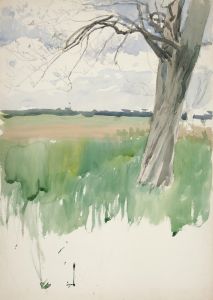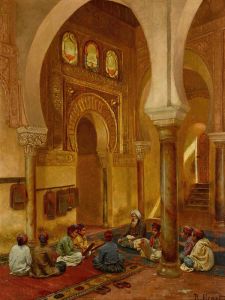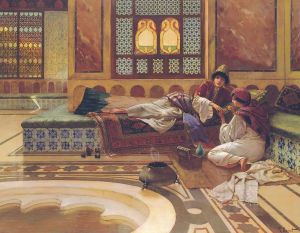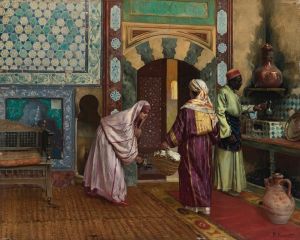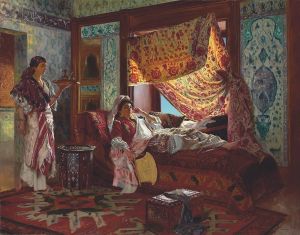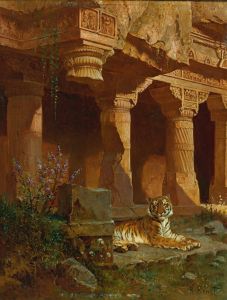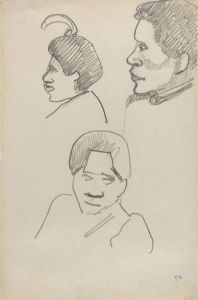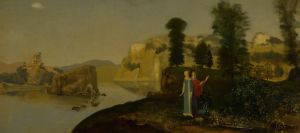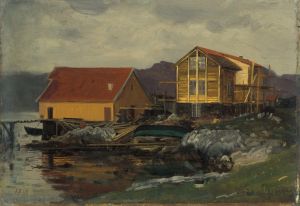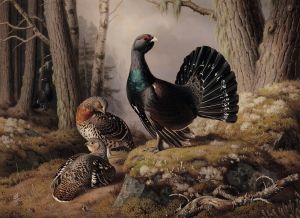
The Watering Hole
A hand-painted replica of Rudolf Ernst’s masterpiece The Watering Hole, meticulously crafted by professional artists to capture the true essence of the original. Each piece is created with museum-quality canvas and rare mineral pigments, carefully painted by experienced artists with delicate brushstrokes and rich, layered colors to perfectly recreate the texture of the original artwork. Unlike machine-printed reproductions, this hand-painted version brings the painting to life, infused with the artist’s emotions and skill in every stroke. Whether for personal collection or home decoration, it instantly elevates the artistic atmosphere of any space.
Rudolf Ernst was an Austrian painter known for his Orientalist works, which often depicted scenes inspired by the cultures, architecture, and daily life of the Middle East and North Africa. One of his notable paintings, The Watering Hole, exemplifies his meticulous attention to detail and fascination with exotic themes.
The Watering Hole portrays a serene and idealized scene of daily life, featuring figures and animals gathered around a water source. The painting reflects Ernst's characteristic use of vibrant colors, intricate patterns, and precise rendering of textures, such as fabrics, tiles, and natural elements. His work often drew from his travels and studies, as well as the broader 19th-century European fascination with the Orient, a term used at the time to describe the regions of the Middle East, North Africa, and parts of Asia.
Ernst was part of the Orientalist movement, which gained popularity in Europe during the 19th century. This movement was influenced by increased contact between Europe and the East through trade, colonial expansion, and travel. Artists like Ernst sought to capture the allure and mystique of these regions, though their works often reflected a romanticized and idealized vision rather than an accurate representation of the cultures they depicted.
While specific details about the creation of The Watering Hole are not widely documented, the painting is consistent with Ernst's broader body of work, which frequently included themes of leisure, architecture, and the interplay between humans and nature. His paintings often featured elements such as fountains, courtyards, and lush vegetation, creating a sense of tranquility and opulence.
Rudolf Ernst's artistic style was heavily influenced by his academic training and his exposure to Orientalist art during his time in Paris. He was known for his ability to blend realism with decorative elements, resulting in works that were both visually striking and evocative of an imagined, idealized East. Today, his paintings, including The Watering Hole, are appreciated for their technical mastery and their role in the history of Orientalist art.
Due to the limited availability of specific historical records about The Watering Hole, further details about its provenance or exact inspiration remain unclear. However, the painting remains a testament to Ernst's skill and his contribution to the Orientalist genre.





